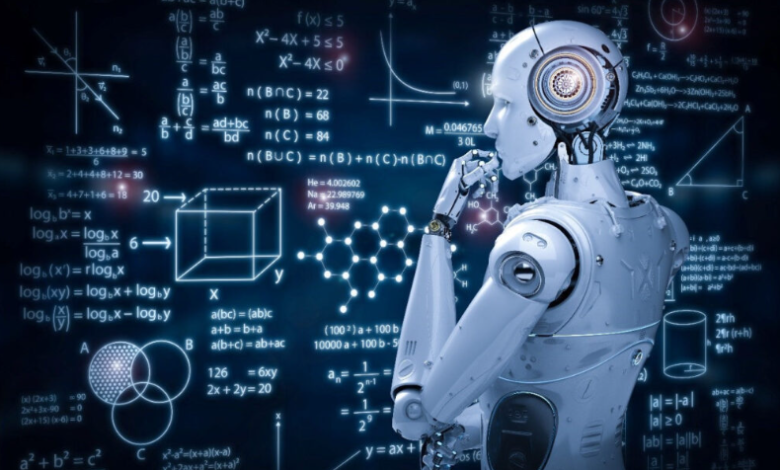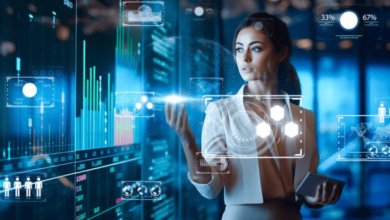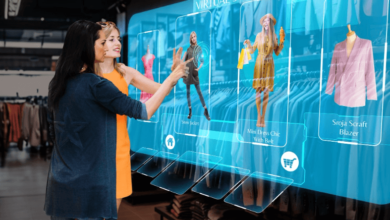How Machine Learning is Changing the Way We Live and Work

Introduction
Machine learning (ML) is a revolutionary technology that’s transforming our everyday lives and reshaping industries. By enabling computers to learn from data, identify patterns, and make decisions with minimal human intervention, ML is driving innovations across sectors. Whether it’s through personalized recommendations, advanced healthcare solutions, or smarter cities, machine learning is making a significant impact on the way we live and work.
In this article, we’ll explore how machine learning is influencing various aspects of our lives, including how we work, interact with technology, and solve complex problems.
1. What is Machine Learning?
Machine Learning (ML) is a subset of artificial intelligence (AI) that allows computers to automatically learn and improve from experience without being explicitly programmed. By analyzing large datasets, ML algorithms identify patterns and make decisions or predictions based on those patterns.
Types of Machine Learning
- Supervised Learning: Algorithms are trained using labeled data, where both the input and output are provided.
- Unsupervised Learning: Algorithms analyze data without predefined labels, uncovering hidden patterns.
- Reinforcement Learning: The algorithm learns by interacting with its environment and receiving feedback in the form of rewards or penalties.
See also: uploadarticlecom
2. Machine Learning in Everyday Life
Machine learning is already deeply embedded in our daily lives. From the apps we use to the products we buy, ML algorithms are at work behind the scenes.
Personal Assistants
Voice assistants like Siri, Alexa, and Google Assistant use machine learning to process natural language, understand user commands, and improve their responses over time.
Personalized Recommendations
Streaming services like Netflix and Spotify use machine learning to analyze user preferences and recommend content based on viewing or listening history.
Social Media
Social platforms such as Facebook and Instagram use ML to personalize user feeds, detect harmful content, and optimize advertising.
3. Machine Learning in Healthcare
In healthcare, machine learning is helping doctors and researchers make better decisions, diagnose diseases earlier, and develop new treatments.
Early Diagnosis
ML algorithms analyze medical imaging data to help detect diseases like cancer at early stages. Systems such as Google’s DeepMind have shown remarkable accuracy in diagnosing eye conditions from retinal scans.
Drug Discovery
Machine learning is accelerating the development of new drugs by predicting how different compounds will interact with the body. This reduces the time and cost of drug development.
Personalized Medicine
ML enables the creation of personalized treatment plans by analyzing patient data, such as genetic information, medical history, and lifestyle factors.
4. Machine Learning in the Workplace
Machine learning is changing the way businesses operate by automating tasks, optimizing processes, and providing data-driven insights.
Automation and Productivity
Machine learning-powered systems can automate repetitive tasks such as data entry, scheduling, and customer service, freeing up employees to focus on more complex and creative tasks. Robotic Process Automation (RPA) is one example of this in action.
Predictive Analytics
Businesses use machine learning to predict market trends, customer behavior, and potential risks. This helps companies make more informed decisions, improving their competitiveness in the market.
Talent Acquisition
Recruiters use ML algorithms to screen resumes, identify the best candidates, and even predict employee turnover. This reduces human bias and increases the efficiency of the hiring process.
5. Machine Learning in Transportation
Transportation is another area where machine learning is making a significant impact, enhancing both efficiency and safety.
Autonomous Vehicles
Self-driving cars, such as those developed by Tesla and Waymo, rely heavily on machine learning algorithms to interpret sensor data, make decisions, and navigate roads safely.
Traffic Management
Machine learning helps optimize traffic flow by analyzing real-time data from sensors and cameras. This can reduce congestion and improve fuel efficiency in urban areas.
Predictive Maintenance
ML algorithms predict when vehicles or infrastructure are likely to break down, enabling timely maintenance and reducing downtime.
6. Machine Learning in Finance
The financial industry has embraced machine learning to enhance decision-making and improve security.
Fraud Detection
ML algorithms are used to detect fraudulent activity by analyzing transaction patterns and flagging unusual behavior in real-time.
Algorithmic Trading
In the world of stock trading, machine learning is used to analyze market data, predict stock price movements, and automate trading strategies.
Credit Scoring
ML models help financial institutions assess the creditworthiness of individuals and businesses more accurately by analyzing a wide range of data points.
7. Machine Learning and Cybersecurity
As the world becomes more interconnected, cybersecurity has become a critical concern. Machine learning plays a key role in detecting and preventing cyber threats.
Threat Detection
Machine learning is used to analyze network traffic and identify potential security threats such as malware, phishing attacks, and data breaches.
Security Automation
ML-powered security systems can automatically respond to threats in real-time, reducing the time it takes to neutralize potential risks.
Behavioral Analysis
Machine learning algorithms monitor user behavior to detect anomalies that could indicate malicious activity, helping organizations protect sensitive data.
8. The Ethical Considerations of Machine Learning
While the benefits of machine learning are clear, there are important ethical concerns that must be addressed to ensure its responsible use.
Bias in Algorithms
ML algorithms can inherit biases present in training data, leading to unfair or discriminatory outcomes. It’s crucial to ensure that the data used to train models is diverse and representative.
Privacy Issues
Machine learning often relies on large datasets that include personal information. Protecting user privacy and ensuring data security is essential to prevent misuse.
Accountability and Transparency
As ML systems become more autonomous, determining who is responsible for their actions becomes more challenging. Transparent and explainable models are necessary to build trust and accountability.
9. Future Trends in Machine Learning
The future of machine learning is promising, with new developments on the horizon that will continue to shape how we live and work.
Edge Computing
Edge computing will bring machine learning closer to the data source, enabling faster decision-making and reducing latency. This is particularly important for applications such as autonomous vehicles and real-time data analysis.
AI and ML Integration
Machine learning will continue to be integrated with other technologies such as natural language processing (NLP), computer vision, and robotics to create even more powerful systems that can understand and interact with the world in more human-like ways.
ML in Creative Industries
Machine learning is beginning to make its mark in creative fields like art, music, and content creation. AI-generated art and music are becoming increasingly sophisticated, and ML-powered tools are helping creators develop new forms of entertainment.
10. Conclusion
Machine learning is undeniably transforming the way we live and work. From enhancing our daily routines to revolutionizing industries, ML is opening up new possibilities and improving efficiencies across the board. However, as this technology continues to evolve, it is essential to address ethical concerns and ensure that it is used responsibly.
The future holds exciting advancements in machine learning, and it is certain that we will continue to see profound changes in the way we interact with technology in the coming years.
FAQs
1. How is machine learning used in everyday life?
Machine learning is used in everyday life in applications like voice assistants, personalized recommendations, social media feeds, and online shopping, all of which help improve user experience.
2. What are the main types of machine learning?
The main types of machine learning are supervised learning, unsupervised learning, and reinforcement learning. Each type is used for different purposes, such as predictions, pattern recognition, and decision-making.
3. Can machine learning help in diagnosing diseases?
Yes, machine learning is used in healthcare to assist in diagnosing diseases early, such as detecting cancers through medical imaging, and predicting health risks based on patient data.
4. How is machine learning changing the workplace?
Machine learning is automating repetitive tasks, improving productivity, enhancing decision-making through predictive analytics, and transforming recruitment processes by screening resumes and predicting employee success.
5. What ethical concerns are associated with machine learning?
Ethical concerns in machine learning include issues of bias, privacy violations, and the accountability of AI systems. Ensuring fairness and transparency is crucial for responsible AI deployment.
6. How will machine learning impact transportation in the future?
In the future, machine learning will play a significant role in autonomous vehicles, improving traffic management, reducing congestion, and providing predictive maintenance for vehicles and infrastructure.




